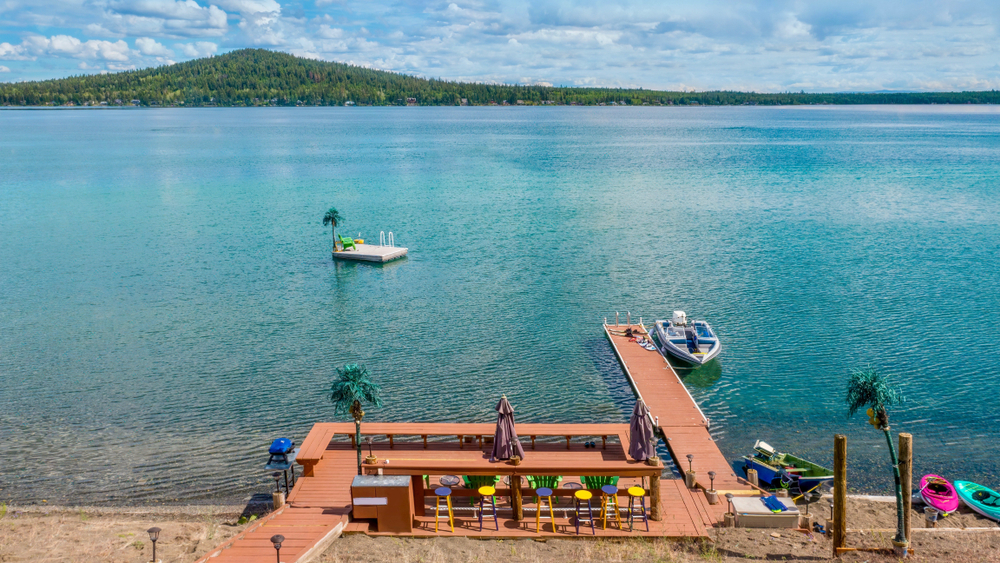Introduction
Floating docks have gained popularity in recent years due to their versatility and ease of installation. One company at the forefront of providing high-quality and sustainable floating docks is One Stop Docks.
However, it is crucial to understand the environmental impact of these docks and how we can mitigate any negative effects. In this blog, we will delve into the ecological benefits of floating docks and explore sustainable practices that can help minimize their environmental footprint.

Preserving Aquatic Ecosystems
Traditional dock structures can disrupt aquatic ecosystems by obstructing sunlight, preventing natural flow patterns, and altering the habitat for aquatic organisms. Floating docks, on the other hand, minimize their impact on the environment.
By allowing light to penetrate through the gaps between the floats, floating docks promote the growth of aquatic vegetation, which is vital for maintaining a healthy ecosystem.
Aquatic vegetation, such as submerged plants or emergent marsh plants, provides essential benefits to the water body. These plants help oxygenate the water by photosynthesizing, which is crucial for the survival of aquatic organisms.
They also act as a natural filtration system, capturing sediments and absorbing excess nutrients, thus improving water quality. The presence of aquatic vegetation offers habitat and food sources for various species, contributing to the overall biodiversity and ecological balance of the ecosystem.
Protecting Shoreline Integrity
One of the key benefits of floating docks is their ability to adapt to changing water levels. This adaptability helps preserve the natural movement of water and reduces erosion along the shoreline. Traditional fixed docks do not possess this flexibility and can cause serious shoreline erosion due to constant water level fluctuations or wave action.
By minimizing erosion, floating docks help maintain the integrity of the shoreline, preventing sediment runoff and protecting nearby habitats. Erosion can lead to increased turbidity in the water, which negatively impacts aquatic life by limiting light penetration and disrupting the natural food chain. With the use of floating docks, erosion is minimized, and natural processes can continue undisturbed.
Promoting Water Quality
Floating docks can play a crucial role in maintaining water quality. The open design of these docks facilitates water circulation, which aids in oxygenation and prevents the accumulation of pollutants. Proper water circulation is crucial for maintaining dissolved oxygen levels, which are essential for aquatic organisms.
Additionally, the use of environmentally friendly materials for dock construction further reduces the risk of introducing harmful substances into the water. Opting for low-impact materials, such as recycled plastics or responsibly sourced timber, minimizes the depletion of natural resources and reduces pollution during the dock’s lifespan.
Sustainable Practices for Floating Docks
Choosing Low-Impact Materials
When installing a floating dock, it is important to select materials that have a minimal environmental impact. Opt for sustainable options such as recycled plastics or responsibly sourced timber. These materials not only reduce the depletion of natural resources but also minimize the release of harmful chemicals into the water.
Recycled plastics, specifically those made from post-consumer or post-industrial sources, offer a durable and environmentally friendly alternative. The use of recycled plastics reduces the demand for new plastic production, which results in fewer greenhouse gas emissions and less energy consumption. Additionally, responsibly sourced timber from sustainably managed forests ensures that the ecological balance of forest ecosystems is maintained.
Proper Installation and Maintenance
Ensure the floating dock is professionally installed and regularly inspected to prevent any leaks or structural damage. A well-maintained dock extends its lifespan and reduces the need for replacement or repairs, therefore minimizing waste generation.
Checks should be performed to identify any potential issues with the floats, connectors, and anchoring systems. Regular cleanings can help remove accumulated debris and prevent the buildup of pollutants on the dock’s surface, ensuring it remains an environmentally friendly structure.
Implementing Natural Shoreline Buffer Zones
Create buffer zones along the shoreline using native vegetation, such as riparian plants and grasses. These buffer zones act as natural filters, reducing the impact of stormwater runoff and improving water quality. They also provide habitat for wildlife, further enhancing the ecological benefits of floating docks.
Native vegetation plays a crucial role in stabilizing the shoreline, preventing erosion, and reducing the runoff of pollutants into the water. The roots of these plants help hold the soil in place, minimizing sedimentation and improving water clarity. Additionally, buffer zones provide shelter and food sources for various wildlife species, contributing to the overall biodiversity of the area.
Responsible Waste Management
Encourage responsible waste management practices by providing proper disposal facilities for dock users. Promote recycling and discourage littering to prevent pollution of the water and surrounding environment. Educate dock users about the importance of responsible waste management and provide clear instructions on how to properly dispose of waste.
Implementing recycling bins at strategic locations near the floating dock can ensure that recyclable materials are segregated and disposed of appropriately. Regular cleaning and maintenance of the area surrounding the dock can help prevent litter from entering the water and damaging the ecosystem.


Conclusion
Floating docks offer several ecological benefits compared to traditional dock structures. By understanding their environmental impact and implementing sustainable practices, we can ensure that floating docks contribute positively to aquatic ecosystems.
From choosing low-impact materials to promoting responsible waste management, the decisions we make can minimize their footprint and help preserve our precious natural resources.
Remember, responsible dock installation, maintenance, and usage are key to maximizing the ecological benefits of floating docks while minimizing any negative impact on the environment.
If you’d like further information or have any questions, please feel free to reach out to One Stop Docks.



